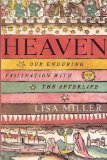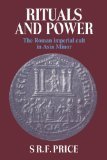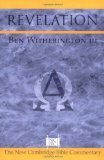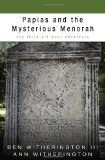Lee Harmon's Blog, page 124
July 4, 2011
2 Samuel 14:25, Absalom's Hair
In all Israel there was not a man so highly praised for his handsome appearance as Absalom. From the top of his head to the sole of his foot there was no blemish in him.
//What a specimen, that Absalom! So gorgeous was he that he sometimes had to cut his hair, because it grew so long and heavy. The locks of hair from each cutting weighed two hundred shekels (about five pounds).
Such a man deserves to be king, or so Absalom imagined. Rebellious, he turned against his father David, God's anointed king. And that's where divine justice caught up with him.
Fleeing the men of David on a mule, his dazzling hair caught on the branch of a tree, and the mule kept going without him. Dangling alive from the tree branch, David's men caught up with him and killed him.
Surely, it's from this story that we derive the common saying: "Hair today, gone tomorrow."
//What a specimen, that Absalom! So gorgeous was he that he sometimes had to cut his hair, because it grew so long and heavy. The locks of hair from each cutting weighed two hundred shekels (about five pounds).
Such a man deserves to be king, or so Absalom imagined. Rebellious, he turned against his father David, God's anointed king. And that's where divine justice caught up with him.
Fleeing the men of David on a mule, his dazzling hair caught on the branch of a tree, and the mule kept going without him. Dangling alive from the tree branch, David's men caught up with him and killed him.
Surely, it's from this story that we derive the common saying: "Hair today, gone tomorrow."
Published on July 04, 2011 06:52
July 3, 2011
Book review: Heaven: Our Enduring Fascination with the Afterlife
 by Lisa Miller
by Lisa Miller ★★★★★
I've found my soul sister! Meet Lisa Miller, a self-described journalist, religion expert, and professional skeptic. She sometimes wants to believe, but it isn't in her. She misses her grandparents, and wishes she could picture them contentedly up there in heaven waiting for her, but she just can't. Her journey in this book to learn about heaven may have been spurred by a certain emptiness. In search of heaven, Lisa interviews dozens of people, from rock musicians to homemakers to heavy-hitting theologians. From Muslims to Jews (her heritage) to Christians and beyond. She finds that, for most people, heaven is the best of what they already enjoy on earth—only a little better. And forever. Lisa likes statistics, and the statistics show religious views are changing. Today, 65 percent of Americans believe that many different religious paths can lead to eternal salvation. Only a third of Americans still believe in a God who controls human events. Yet, 81 percent of Americans tell pollsters that they believe in heaven, up from 72 percent ten years earlier. How can this be? "It's hard to know exactly what they mean—beyond an automatic and understandable hope for something after death besides the terrifying end of everything." Belief in reincarnation, for example, is trending upward, fueled in part because people today WANT to come back and live again. Life is better in our age. Where before, we wanted to escape the cycle, now we want another run at it.
A fun and thought-provoking book, I'd recommend this one for anyone.
(click picture to buy on Amazon)
Published on July 03, 2011 06:14
July 2, 2011
Revelation 5:7, The Scroll with Seven Seals
[Jesus] came and took the scroll from the right hand of him who sat on the throne.
//In Revelation, Jesus is the only person found worthy to open a mysterious scroll. Sealed seven times over, it obviously hides a great secret. In heaven, Jesus removes the seals one-by-one, initiating a sort of countdown; after each seal, our attention is drawn to the earth, where battles and famines and natural disasters occur.
Have you ever wondered where this scroll came from? Let's see if we can uncover its roots and learn what it says.
My best guess is that Revelation's scroll comes from the book of Daniel. A fiery angel from heaven interpreted Daniel's visions of horned beasts and great kings to foretell how the world would end, but God told Daniel to seal up his story until the end of days.
After its seals are removed one-by-one, we seem to lose track of the scroll, but it surfaces again in chapter 10 of Revelation. There, a mighty angel stands holding a little scroll, now open. He plants his fight foot on the sea and his left foot on the land. Daniel's mighty angel actually stands towering over a river; Revelation has perhaps tweaked this image to mimic the Caesars, who were sometimes portrayed standing over land and sea, bringing prosperity to the land and peace to the seas.
Now in Revelation, the angel swears there will be no more delay, and his speech rumbles like the seven thunders of heaven. But John is told not to write down in Revelation what the angel says; he is ordered to take the scroll and swallow it. And that's the last we hear of it.
Oh, so close! Daniel's end-of-the-world scenario remains a mystery still.
//In Revelation, Jesus is the only person found worthy to open a mysterious scroll. Sealed seven times over, it obviously hides a great secret. In heaven, Jesus removes the seals one-by-one, initiating a sort of countdown; after each seal, our attention is drawn to the earth, where battles and famines and natural disasters occur.
Have you ever wondered where this scroll came from? Let's see if we can uncover its roots and learn what it says.
My best guess is that Revelation's scroll comes from the book of Daniel. A fiery angel from heaven interpreted Daniel's visions of horned beasts and great kings to foretell how the world would end, but God told Daniel to seal up his story until the end of days.
After its seals are removed one-by-one, we seem to lose track of the scroll, but it surfaces again in chapter 10 of Revelation. There, a mighty angel stands holding a little scroll, now open. He plants his fight foot on the sea and his left foot on the land. Daniel's mighty angel actually stands towering over a river; Revelation has perhaps tweaked this image to mimic the Caesars, who were sometimes portrayed standing over land and sea, bringing prosperity to the land and peace to the seas.
Now in Revelation, the angel swears there will be no more delay, and his speech rumbles like the seven thunders of heaven. But John is told not to write down in Revelation what the angel says; he is ordered to take the scroll and swallow it. And that's the last we hear of it.
Oh, so close! Daniel's end-of-the-world scenario remains a mystery still.
Published on July 02, 2011 06:32
July 1, 2011
Book review: Rituals and Power: The Roman Imperial Cult in Asia Minor
 by S. R. F. Price
by S. R. F. Price★★★
By beginning the book with a survey of the development of Hellenistic religion and Temple worship, Price eases into the topic of how Roman emperors grew to be worshipped in the same manner. Drawing on literary sources and archaeology, and comparing the rituals of Imperial temples to those of Greek gods, he concludes that the worship of Roman emperors was far from some sham religion meant to honor Asia Minor's controlling rulers. The emperors of Rome were honestly worshipped as divine.
Price discusses temple construction, the cultural context, and the rituals that were performed. Caesar worship became hopelessly intertwined with public religion, commerce, government, entertainment, and ceremony.
Why is this topic interesting to me? Because the rise of the Imperial Cult mirrored the rise of Christianity, and in Asia minor especially, it must be considered a primary competitor to Christianity. The Book of Revelation provides the most clear Christian response to the Imperial Cult in Asia Minor, severely opposing its abominable worship. While very little is mentioned in Price's book about Christianity, the Christian scholar will, of course, read the book with the topic of Christian opposition and particularly John's Apocalypse in the back of his mind.
I'm unaware of any more exhaustive research on this topic, and for that reason, it's an important book. I did, however, find the writing too dry for easy reading. You will learn, but you will dig hard to do so.
(click picture to buy on Amazon)
Published on July 01, 2011 07:23
June 30, 2011
John 20:28, "My Lord and My God"
Thomas said to him, "My Lord and my God!"
//Several passages in John's Gospel we know are not original, but were added sometime later. John's Gospel, though a personal favorite, may be the book in the Bible that has changed most since its original composition. This naturally invites a bit of skepticism about any passage which doesn't seem to fit the theology or pattern of the rest of the book.
Here is an example. Near the end of the Gospel, the risen Jesus magically appears to his followers in a locked room, where he bestows peace upon them. But the scene seems to happen twice, in the same house, with the same message of peace, as if two versions of the appearance story are presented side-by-side.
In the second story, Thomas becomes a guinea pig, his unbelief providing opportunity for a dramatic proof of the resurrection. Then [Jesus] said to Thomas, "Put your finger here; see my hands. Reach out your hand and put it into my side. Stop doubting and believe." We all know Thomas' response: He pronounces Jesus his "Lord and God."
This "touching" opportunity contradicts the words of Jesus to Mary just a few verses earlier. So does Jesus' pronouncement, "Blessed are those who have not seen and yet believed" contradict Johannine theology, where "seeing" is never meant literally. According to John, one "sees" Jesus by being born again. But if this second story is a later redaction, what prompted its inclusion? Is it merely there to reinforce the doctrine of a corporeal resurrection body? Or is there something more to the passage?
Possibly, a clue to the story's addition may be seen in the competition between Christianity and the cult of Caesar worship. Domitian had recently declared himself divine, and began to demand the title "Lord and God." The Christian response, then, may have been to emphasize Jesus in that role.
//Several passages in John's Gospel we know are not original, but were added sometime later. John's Gospel, though a personal favorite, may be the book in the Bible that has changed most since its original composition. This naturally invites a bit of skepticism about any passage which doesn't seem to fit the theology or pattern of the rest of the book.
Here is an example. Near the end of the Gospel, the risen Jesus magically appears to his followers in a locked room, where he bestows peace upon them. But the scene seems to happen twice, in the same house, with the same message of peace, as if two versions of the appearance story are presented side-by-side.
In the second story, Thomas becomes a guinea pig, his unbelief providing opportunity for a dramatic proof of the resurrection. Then [Jesus] said to Thomas, "Put your finger here; see my hands. Reach out your hand and put it into my side. Stop doubting and believe." We all know Thomas' response: He pronounces Jesus his "Lord and God."
This "touching" opportunity contradicts the words of Jesus to Mary just a few verses earlier. So does Jesus' pronouncement, "Blessed are those who have not seen and yet believed" contradict Johannine theology, where "seeing" is never meant literally. According to John, one "sees" Jesus by being born again. But if this second story is a later redaction, what prompted its inclusion? Is it merely there to reinforce the doctrine of a corporeal resurrection body? Or is there something more to the passage?
Possibly, a clue to the story's addition may be seen in the competition between Christianity and the cult of Caesar worship. Domitian had recently declared himself divine, and began to demand the title "Lord and God." The Christian response, then, may have been to emphasize Jesus in that role.
Published on June 30, 2011 06:38
June 29, 2011
Book review: Fallen Angels and the Origins of Evil
 by Elizabeth Clare Prophet
by Elizabeth Clare Prophet
★★★★
I bought this book just so that I would have a bound translation of the Book of Enoch, and wound up reading … well, most of it. The translation provided here is by Richard Laurence, LL. D. But there's much more in Prophet's book than this translation.
Genesis chapter six tells how the sons of God (the Watchers) procreated with the daughters of men to create a race of giants known as the Nephilim. The Book of Enoch, much of which was written as early as the 3rd century BC, expands upon the story of the Watchers, and was well-read in the century of Christ. It seems to have been revered as scripture, quoted directly in the Bible. Rabbis and Christian Church fathers in later centuries, however, denounced the book and banned it.
Prophet takes about eighty pages of her book to detail the "hidden references" in the Bible to the Watchers and the Book of Enoch, and this section alone is worth the price of the book. When researching for my book about Revelation, I became convinced that there was simply no way to understand what John was writing about without reading Enoch; it contained the source of many of the beliefs espoused by Revelation.
So, let's talk about the origin of evil. Did rebel angels take on human bodies to fulfill their lust for the "daughters of men?" Did these fallen angels teach men to build weapons of war? Prophet takes Enoch quite seriously, and delves into other ancient literature as well as she details what we should know about embodied angels. In a chapter titled Spiritual Solutions, she teaches us to chart our "divine self." You get the idea; I'm afraid this isn't really my thing, so my rating of four stars is based upon the translation and research, not the evangelizing.
(click picture to buy on Amazon)
Published on June 29, 2011 06:30
June 28, 2011
2 Kings 9:30, The evils of makeup
Then Jehu went to Jezreel. When Jezebel heard about it, she painted her eyes, arranged her hair and looked out of a window.
//In this story, Jehu rebels against Israel's king Jorum and goes on a murdering rampage, protesting the "many whoredoms and sorceries" of Jorum's mother, Jezebel. Jehu nails King Jorum with an arrow and chucks his corpse aside. Then he charges after Judah's king Ahaziah, and murders him, too. Finally, he marches to Jezebel's palace.
It becomes a Rapunzel theme with a twist. The damsel (Jezebel) slathers on the makeup, gets her hair all ready, and peeks out the window. She asks if her handsome prince has come in peace. But Jehu instead hollers up at the window, asking if anyone else is up there. "Two or three eunuchs" peek out, and the prince doesn't take time to climb up her hair for a rescue; he tells the eunuchs to just toss her out the window.
Unfortunately, the story ends badly. She "spatters" on the ground and is trampled under horses. Then, she's eaten by dogs.
Don't feed badly, it's apparently what she deserves. Jezebel was the first biblical character to wear makeup, and the act is implicitly linked to her "whoredom." To this day, some Christian denominations continue to associate makeup with the harlotry of Jezebel.
//In this story, Jehu rebels against Israel's king Jorum and goes on a murdering rampage, protesting the "many whoredoms and sorceries" of Jorum's mother, Jezebel. Jehu nails King Jorum with an arrow and chucks his corpse aside. Then he charges after Judah's king Ahaziah, and murders him, too. Finally, he marches to Jezebel's palace.
It becomes a Rapunzel theme with a twist. The damsel (Jezebel) slathers on the makeup, gets her hair all ready, and peeks out the window. She asks if her handsome prince has come in peace. But Jehu instead hollers up at the window, asking if anyone else is up there. "Two or three eunuchs" peek out, and the prince doesn't take time to climb up her hair for a rescue; he tells the eunuchs to just toss her out the window.
Unfortunately, the story ends badly. She "spatters" on the ground and is trampled under horses. Then, she's eaten by dogs.
Don't feed badly, it's apparently what she deserves. Jezebel was the first biblical character to wear makeup, and the act is implicitly linked to her "whoredom." To this day, some Christian denominations continue to associate makeup with the harlotry of Jezebel.
Published on June 28, 2011 07:19
June 27, 2011
Book review: Revelation, The New Cambridge Bible Commentary
 by Ben Witherington III
by Ben Witherington III
★★★★★
I promised a review of my favorite Witherington book today; you should have guessed it would be about Revelation. Whether you're a scholar of Revelation, a believer in future fulfillment, or just curious about early Christian eschatology (the study of the end times), this book is a gem. It's a New Cambridge Bible Commentary, which is a well-respected series. I think a quote from the back cover expresses my opinion blandly but accurately:
"Without sacrificing scholarly perspective or academic rigor, it is written to be accessible for pastors, scholars, teachers, seminarians, and interested laypeople."
As research for a book I completed a few months ago, I collected a stack of books about Revelation that would rival most any library. This one was probably the most fun to read. Witherington writes respectfully and from a Christian viewpoint but still dives deeply into the historical roots of Revelation. He jumps often into sidebars which he titles "Bridging the horizons" and "A closer look." (He alternates between the two sidebar titles, and it took me most of the book to recognize this; what's up with that, Ben?) Anyway, these sidebars alone are worth the price of the book. Here are a few topics from them:
God and Christ as the Alpha and OmegaThe mythological background of Revelation 12666, Nero, and the ancient art of GematriaFallen angels in early Judaism and ChristianityHeavenly Jerusalem or Sky City?
What a Bible geek I am! I get giddy just paging back through the book to write this review. I'm gonna read it again.
(click picture to buy on Amazon)
Published on June 27, 2011 06:57
June 26, 2011
Matthew 22:44, God the Son? Part IV of IV
"The LORD said unto my Lord, sit thou on my right hand, till I make thine enemies thy footstool."
//These are the words of David, as quoted by Matthew. It means, "God said unto David."
Matthew loves to quote scripture. But Matthew was writing in Greek, quoting the Greek translation of the Old Testament's original Hebrew. The Hebrew rendition makes a distinction between the divine name of LORD (Hebrew: Yahweh) and the lesser title Lord (Hebrew: adown). "Yahweh said unto adown." But Matthew uses the same Greek word, kyrios, for both: Kyrios said unto my kyrios. English translators, to help clear things up, have substituted LORD (capital letters for God) and Lord (lower case letters for lordship).
Here's another one. Deuteronomy 6:16 says, Ye shall not tempt the LORD (Hebrew: Yahweh) your God. When Matthew quotes the verse in Greek, it becomes Thou shalt not tempt the Lord (Greek: kyrios) thy God. It's left as a lowercase Lord in the English translation, because no distinction is necessary. We know it means God.
Now we come to the argument most often put forth by Trinitarians hoping to prove the Bible's consistency: Lord, like LORD, can apparently mean God. Matthew calls God and Jesus both kyrios, as did the Septuagint before him (the Greek translation of the Old Testament), so, Trinitarians reason, God and Jesus must be the same. The Greek word kyrios, they explain, was revered so much that it was used by first century Jews exclusively in replacement of Yahweh.
Except that this is not so. Today's verse shows clearly that kyrios can mean either Yahweh or adown. We cannot assume that where Matthew uses kyrios, he means the divine name of God. Nor can we assume that Matthew's willingness to call God by the lesser word kyrios implies that when he calls Jesus kyrios he then means Jesus is God. It just doesn't work that way. The "divine name" argument serves only to complicate the simple message of Matthew, and with this final Trinitarian protest debunked, it leaves us with absolutely no reason to ever believe Matthew shared the high Christology of John.
Jesus is God? John says yes. But it never crossed Matthew's mind.
//These are the words of David, as quoted by Matthew. It means, "God said unto David."
Matthew loves to quote scripture. But Matthew was writing in Greek, quoting the Greek translation of the Old Testament's original Hebrew. The Hebrew rendition makes a distinction between the divine name of LORD (Hebrew: Yahweh) and the lesser title Lord (Hebrew: adown). "Yahweh said unto adown." But Matthew uses the same Greek word, kyrios, for both: Kyrios said unto my kyrios. English translators, to help clear things up, have substituted LORD (capital letters for God) and Lord (lower case letters for lordship).
Here's another one. Deuteronomy 6:16 says, Ye shall not tempt the LORD (Hebrew: Yahweh) your God. When Matthew quotes the verse in Greek, it becomes Thou shalt not tempt the Lord (Greek: kyrios) thy God. It's left as a lowercase Lord in the English translation, because no distinction is necessary. We know it means God.
Now we come to the argument most often put forth by Trinitarians hoping to prove the Bible's consistency: Lord, like LORD, can apparently mean God. Matthew calls God and Jesus both kyrios, as did the Septuagint before him (the Greek translation of the Old Testament), so, Trinitarians reason, God and Jesus must be the same. The Greek word kyrios, they explain, was revered so much that it was used by first century Jews exclusively in replacement of Yahweh.
Except that this is not so. Today's verse shows clearly that kyrios can mean either Yahweh or adown. We cannot assume that where Matthew uses kyrios, he means the divine name of God. Nor can we assume that Matthew's willingness to call God by the lesser word kyrios implies that when he calls Jesus kyrios he then means Jesus is God. It just doesn't work that way. The "divine name" argument serves only to complicate the simple message of Matthew, and with this final Trinitarian protest debunked, it leaves us with absolutely no reason to ever believe Matthew shared the high Christology of John.
Jesus is God? John says yes. But it never crossed Matthew's mind.
Published on June 26, 2011 07:10
June 25, 2011
Book review: Papias and the Mysterious Menorah
 by Ben Witherington III & Ann Witherington
by Ben Witherington III & Ann Witherington ★★★★
Witherington is one of my favorite authors. He's very well steeped in the history and Christianity of the first and second centuries, and an excellent source for learning. But I never knew he wrote fiction until my own publicity agent mentioned it to me! Bob Todd Publicity represents Witherington as well, so he sent a sample my way for review. It's the third of a series about a lovable archaeologist named Art West. Indiana Jones with half the testosterone and twice the education.
In this book, Art investigates the discovery of the house of Papias, who forms an important link between the church fathers of the second century and the original apostles and writers of the first century. Art helps uncover a find that would make any Christian archaeologist salivate: evidence by Papias' own hand that the gospels of Matthew and Mark were not written anonymously, but truly penned by their traditionally named authors: Matthew, a tax collector, and Mark, the sidekick of Peter.
Sorry, folks, it's fiction; Papias' home hasn't been discovered, nor has proof of traditional Gospel authorship. But much of the book is factual, built upon current archaeological finds.
I don't think Witherington's fiction is quite as good as his nonfiction. This one will appeal primarily to fellow archaeologists and wannabees. I never did get used to the stilted language, and my editor would tell Witherington to swap his passive for active verbs. But I loved the subject matter, and I definitely enjoyed learning about first- and early second-century Christianity from a different angle.
In a couple days, I'll review a nonfiction Witherington book which I found absolutely fascinating.
(click picture to buy on Amazon)
Published on June 25, 2011 07:28



